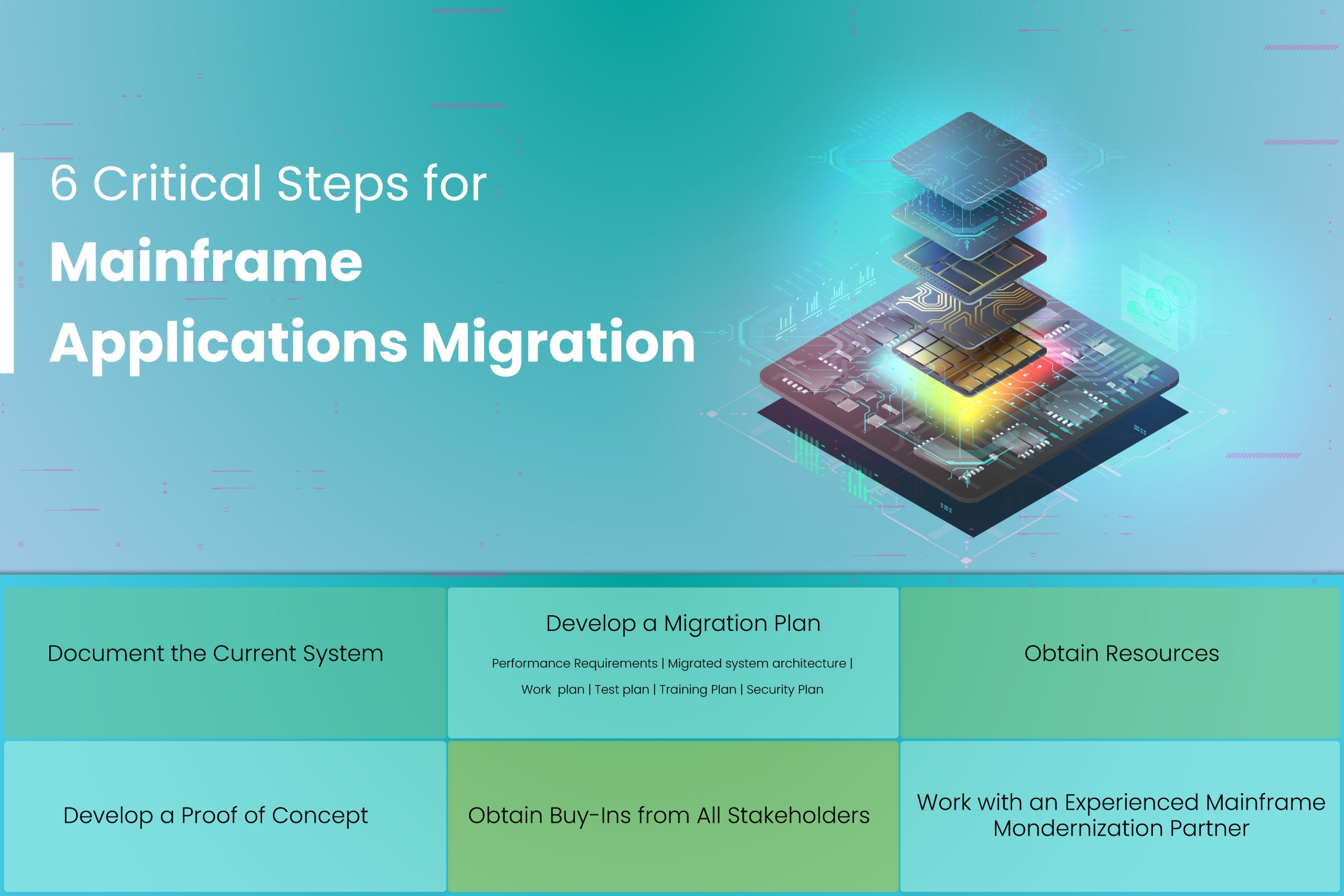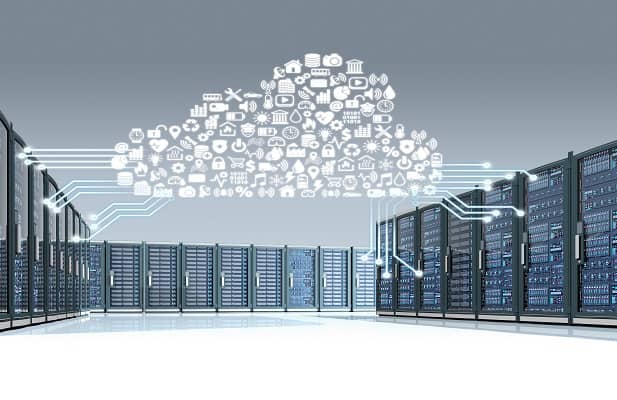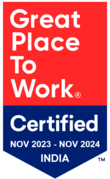Businesses have relied on mainframes since the 1950s. Even after seven decades of technological innovations, IBM reported that many of the world’s leading companies still run essential applications on large, centralized computers. Examples of the biggest companies that still use mainframes include most of the largest insurance companies, banks, and various businesses included in the Forbes Top 100 list.
At the same time, competing technologies have risen that can offer businesses greater efficiency, cost savings, and an enhanced ability to scale. For instance, innovations like cloud computing can help companies seize opportunities, control budgets, and manage disruption. When it’s time to migrate from a legacy mainframe environment to a cloud-based or hybrid architecture, your migration team will need to start with a solid plan.
Because so many companies still have mainframes so firmly entrenched in their IT departments and even company culture, migration teams can face multiple obstacles even when they offer a better solution. That plan will provide your business with a way to communicate with and satisfy stakeholders and a roadmap to ensure success. This blog explores the critical need for mainframe migration, why investing in modernization is crucial, and provides mainframe migration best practices for a successful transition to cloud-based or hybrid architectures.
Table of Contents
Why Invest in Mainframe Modernization?
Some business leaders may voice objections over moving existing systems to the cloud. Often, their established companies may have made sizable investments in their mainframe applications, networks, and storage over the course of decades. Of course, today’s mainframes are much more robust and efficient than the first models that businesses experimented with 70 years ago. Thus, some executives express reluctance to invest in new solutions, even if they can improve the company’s security, business processes, and agility in the future.
Even so, enterprises that use mainframes today rarely rely on them for all of their IT needs. Instead, they constantly work with cloud providers like AWS and Azure on mainframe modernization projects. Mainframe modernization may mean interfacing legacy systems with cloud systems or refactoring and re-platforming apps to move them entirely to the cloud. Industry analysts expect corporate investments in cloud computing to grow by almost 16 percent by 2028.
Cloud computing can offer considerable benefits over mainframes, including improved agility, a better ability to scale resources and processing power, decentralization, remote access to computing resources and systems, and efficient interfaces with other modern, cloud-based systems. Companies also find it easier to find qualified employees and partners to work with new technology than with old-fashioned legacy languages, like COBOL or JCL.
Mainframe Migration Best Practices for a Successful Cloud Migration
Our customers come to us with compelling reasons to migrate applications, storage, and networking to the cloud. They often need to simplify interfaces, control budgets, and improve their ability to scale rapidly. Even so, most of these projects share common elements. Based on our experience with successful migrations of mainframe applications and features to the cloud, we have developed a list of essential mainframe migration best practices.

Document the Current System
A crucial aspect within the framework of mainframe migration best practices is that analysts will need to understand the current system before developing a migration plan. For the first task, document all inputs, outputs, triggers, priorities, timing, and any other systems that either supply or depend upon this application.
Determine if the migration or other development renders any features redundant or obsolete. Removing this code can save time and money during the migration and will also help reduce bloat when the migrated software runs in a production cloud environment.
As part of the documentation of the current system:
Look for logical ways to group and prioritize applications within the overall system. Migrating and testing portions of the system at a time will minimize risks while simplifying and speeding up the entire process.
Take care to note all external and internal integration points with other systems. This step helps avoid unwelcome surprises later. It also allows analysts to check for data flows that have grown redundant or are no longer necessary.
Develop a Migration Plan
The migration plan offers a roadmap for future work. In addition, this document provides a valuable communication tool that all stakeholders can review to spot potential issues before they occur in production or cause developers to waste time in testing. More detailed plans will prove more effective for both uses. The effectiveness of such plans significantly escalates when they delve into granular details, making them invaluable for optimizing mainframe migration best practices across the board.
Essential elements of the migration plan include:
- Performance requirements: Document the new system’s performance requirements. Some examples of performance requirements include execution speed, storage capacity, and response time.
- Migrated system architecture: This step includes technical details for processing, storage, and interfaces. The report can include software, hardware, vendor accounts, network connections, etc.
- Work plan: Document all the necessary code, scheduling, and interface changes for developers and hardware technicians that need to occur before and after migration. Assign responsibility to various teams for each task.
- Test plan: Include details about such functional requirements as scheduling, outputs, interfaces, and reports in the test plan. Document test cases and expected results.
- Training plan: Offer a training plan to cover new or updated processes for system operators, users, and support. Assign responsibility to ensure implementation.
- Security plan: Ensure software, monitoring, and governance policies can assure the company that the new system will function securely and with no overlooked gaps. Document new or existing security and monitoring software.
Obtain Resources
To implement mainframe migration best practices effectively, the migration team will need to work with system architects, internal suppliers, and vendors to ensure they can obtain the documented resources required to create test and production platforms.
Develop a Proof of Concept
A crucial step in implementing mainframe migration best practices is the development of a proof-of-concept. A proof-of-concept demonstrates the feasibility of plans to the migration team and other interested parties. Plus, the exercise can also help shake out any flaws in the plans to address them before the real work begins. In addition, this type of feasibility study will also help sell the project to management and other stakeholders.
In the best case, the development team can create a test environment that mirrors the production environment. Using the test plan, the team can document results and performance to prove the validity of the migration plan. Other elements of a proof of concept could include previous migrations that functioned as expected with a similar architecture.
Obtain Buy-Ins from All Stakeholders
Of course, no plan can come to fruition without approval from all stakeholders, particularly system users and the managers in charge of the budget. Some people may express resistance because of concerns over security, functionality, or performance. Sadly, others may not cooperate because they simply fear change or worry about the future of their jobs.
To effectively address these concerns, it’s crucial to implement mainframe migration best practices. Detailed migration plans that include a clear statement of benefits can help alleviate many of these concerns. Use employee-focused language to:
Help stakeholders understand how modernization can help the business save money and grow. For instance, an enhanced ability to scale can help companies rapidly scale up to respond to new opportunities or scale back when business slows down.
Emphasize the ways that the changes can improve their own jobs and careers. For instance, they may get a better interface, remote access, and a chance to develop new skills.
Many companies also find it helpful to start with the groups most eager for change. While some employees may express resistance, others will feel excited when they get a chance to work with updated interfaces, eliminate drudgery, learn new things, improve data quality, and complete tasks more efficiently.
When deciding how to split the entire system into parts, address the applications that the more eager employees work with first. When more resistant groups see the success of the early adopters, they’re more likely to buy in and even express eagerness to enjoy the same transformative technical advances for themselves.
Leverage Mainframe Migration Best Practices with an Experienced Partner
Navigating the complexities of mainframe migration best practices requires a systematic approach. We can outline a migration plan in a few simple steps. At the same time, we know that each stage of the plan requires a migration team to fill in many blank spaces and details. That explains why it’s so important to work with a trusted, experienced partner who can ensure you avoid pitfalls and invest in valuable innovation to help your company prosper in the future.
Your migration partner can help you develop a plan, address concerns, present proof of concept, and enjoy the fruits of a successful migration project. Over three decades, Kumaran Systems has evolved into a leading international technology migration partner. In turn, we have partnered with the most successful companies to assist in their digital transformation.
Our innovative culture, experience with top businesses, and successful track record ensure you will enjoy maximum value. Contact us to discuss your vision for the future, and we’ll explain how we will help you achieve it.



